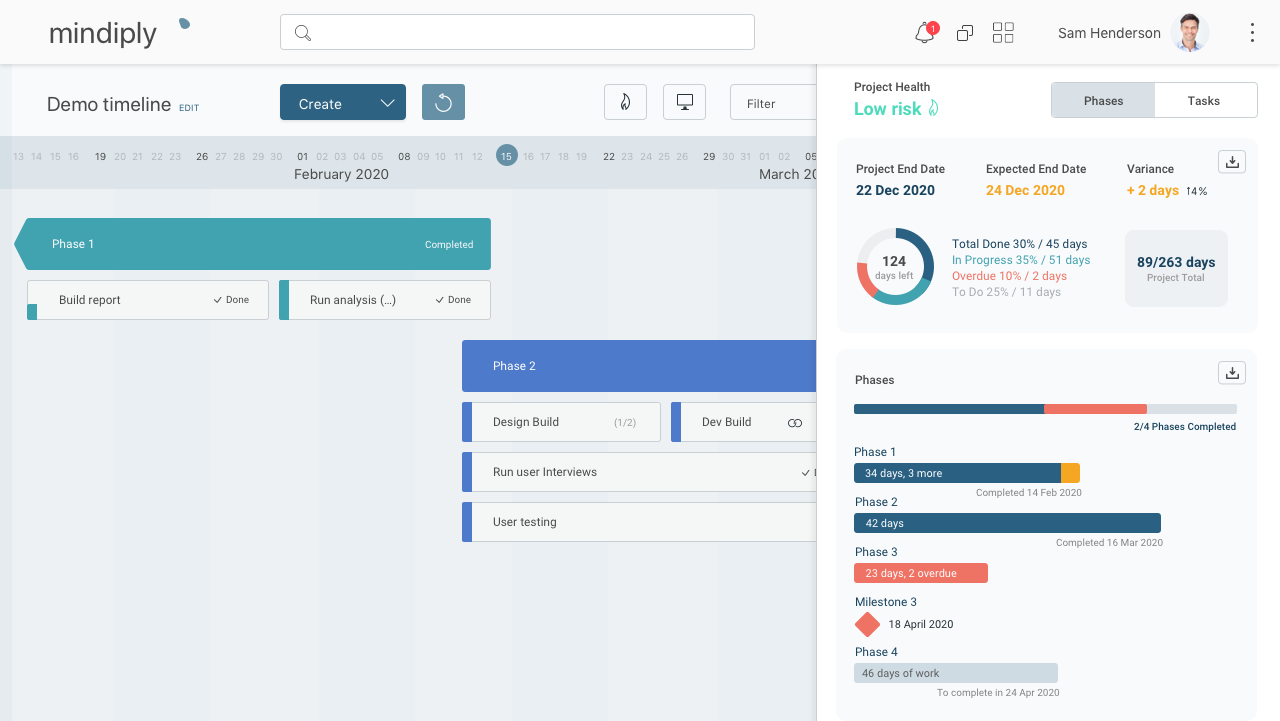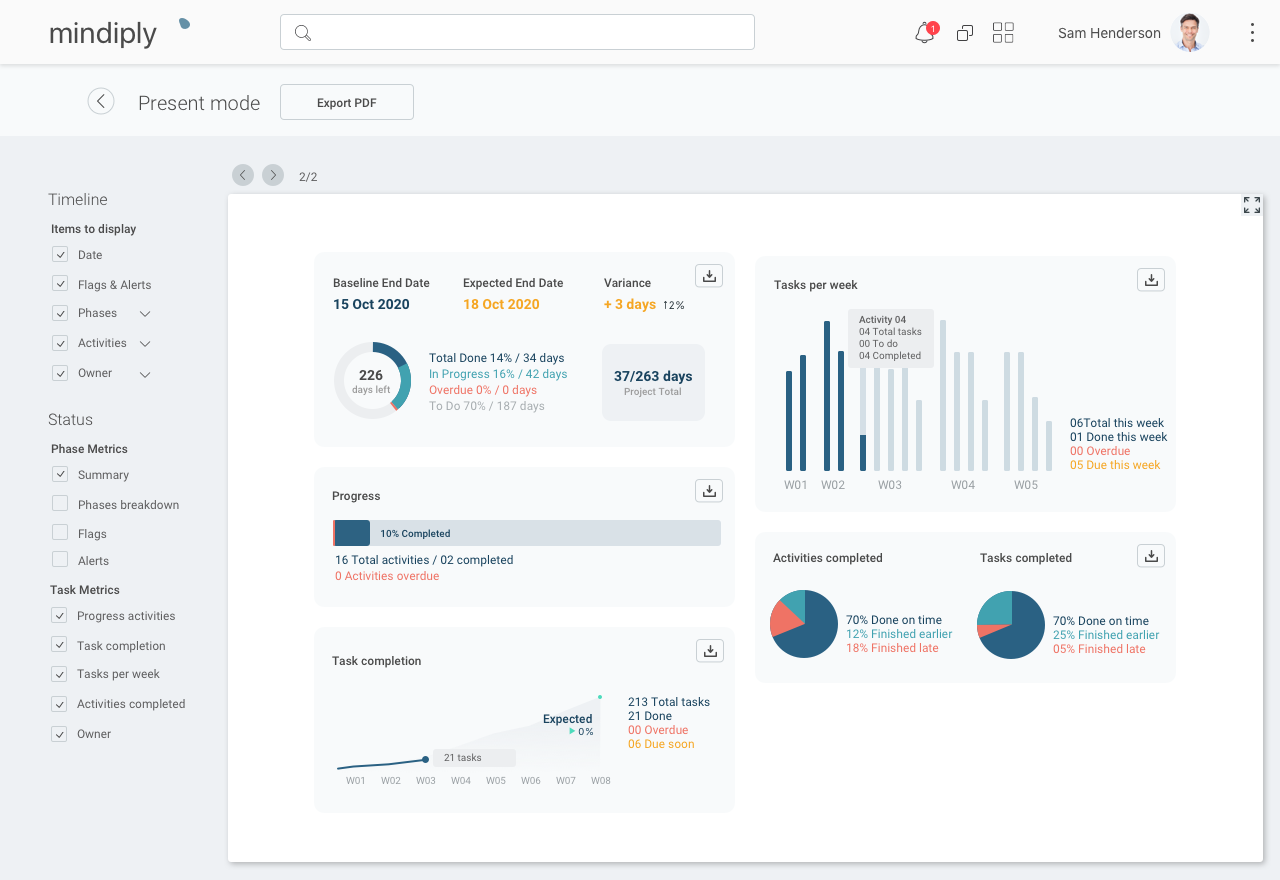
A Guide to Project Management Timelines: The Easy Way
Francesco Marcatto12 Feb 20
Table of contents
Novice Project Managers might find the laborious task of creating a well-thought-out project management timeline a ‘waste of time’. However, as every seasoned PM who has felt the uncompassionate ‘tic of the clock’ as deadlines approach knows well, when you’re knee-deep in a project time can be your greatest enemy if managed poorly.
And this problem gets bigger the larger the project. This is why it’s vitally important to understand the fine art of creating a Project Management Timeline.
Throughout this article, I’ll take a closer look at the steps for creating a timeline, what critical components are required to ensure that everything goes according to plan and much more.
However, before we can truly get down to the ‘nitty-gritty’ of Timeline creations we must first understand what a Project Management Timeline truly is.
So what’s the deal with Timeline Project Management?
In essence, a Project Management Timeline is basically a series of tasks or activities– within the scope of a project – organized in chronological order, providing a visual representation to every member of the team and to clients and stakeholders too. It allows us to track the progress of the project, deal with unforeseen consequences, allocate resources and much more.
Truly, time is the only resource that is forever wasted when it is gone. Poorly managed deadlines or underestimations of the duration of a task can lead to a significant delay in delivering a successful project. Mismanagement of time can also lead to internal problems, such as loss of focus and motivation in your team members.
Thus, in order to become a successful project manager, you must first learn to master time management.
Fortunately, here’s a primer on project management timelines.
What are the critical components of a well-though-out Timeline?
There are a few questions you have to ask yourself at the beginning of every project you will manage. Let’s quickly walk through them:
-
What is the ‘Scope’ of the Project?
-
What is the ‘Work Breakdown Structure’?
-
What are the ‘Tasks’ required to achieve the deliverables?
-
What are the ‘Dependencies’ between tasks?
-
How much ‘Time’ will it take to complete each task?
-
What ‘Resources’ do you have at your disposal?
-
What are ‘Milestones’ that determines you’re on the right path?
While there are obviously many more things to consider, everything essentially falls under these main categories.
With this in hand, you can now begin to manipulate time and plot out everything within a Project Management Timeline.
Which are the core benefits of having a Project Management Timeline?
Before rushing into the “how to”, let’s first take a closer look at the benefits obtained by adopting project management timelines.
-
Clear Goals - Arguably one of the biggest advantages is having a ‘clear project vision’. Bring everyone on the same page with a clear, visual timeline. If everybody knows what they need to do and by when they need to do it, you remove many potential obstacles on the path to success. More importantly, you don’t waste time having to re-explain everything every time someone doesn’t know what’s going on. Just point them to the timeline.
-
Priority Decision Making – Being able to visually see the progress of the project will allow you to make priority decisions easier. It will give you the ability to do easily adjust priorities and shuffle things around to ensure that the project stays on point.
-
Focus and Empowerment –Timelines allow individuals more autonomy over ‘how they spend their time’. If everyone is on the same page, then people can accommodate their schedules to become more efficient with their own time management. It’s one of the main benefits of the Management By Objectives approach: Giving people a purpose and a goal increases motivation and empowerment, and being aware to work towards common goals reinforces a positive work environment.
-
Clients love it – Let’s not forget about the client. As a project manager, you’ll need to justify resource allocation. With a Timeline, you can literally show your client: a. Where you are in the project b. What is still missing c. The expected time of completion.
Now that we understand the benefits of project management timelines (see also this article), let’s see how we can go about making one.
Is there an easy way to create a Project Management Timeline?
I could tell you about all the individual steps to setting up a project but you’re not here for that. I bet you already understand how to set up the parameters of a project. What you’re really looking for is “What’s the easiest way for me to set up a visual timeline for my projects?”
In the late 1990s or even in the early 2000s, creating a timeline involved rolls of industrial paper sheets. But we’re in 2020, and now we use utilize digital cognitive artifacts (such as cloud computing and a whole plethora of online tools) that which make us smarter, faster, and more efficient overall.
If you want to set up an interactive project management timeline that can be modified in real-time, then look no further. Mindiply Timeline is the perfect online tool for creating project management timelines and managing project status reports.

Boost your productivity by reducing team and client meetings. Map your projects’ tasks, milestones, and deadlines in an intuitive way, so you can collaborate easily with your team members. Drag and drop or edit your information in a matter of seconds and make sure everyone is clear about what’s coming ahead and what’s expected of them at every stage.
There is no need to waste time creating Powerpoint slides anymore. Customize your timeline and reports to fit what you want to communicate to your clients and stakeholders at every stage of the project.

Ready to create your first Project Management Timeline? Start your 30-day free trial!
If you have any questions or comments, feel free to reach out us at info@mindiply.com & let’s see what we can do for you.







